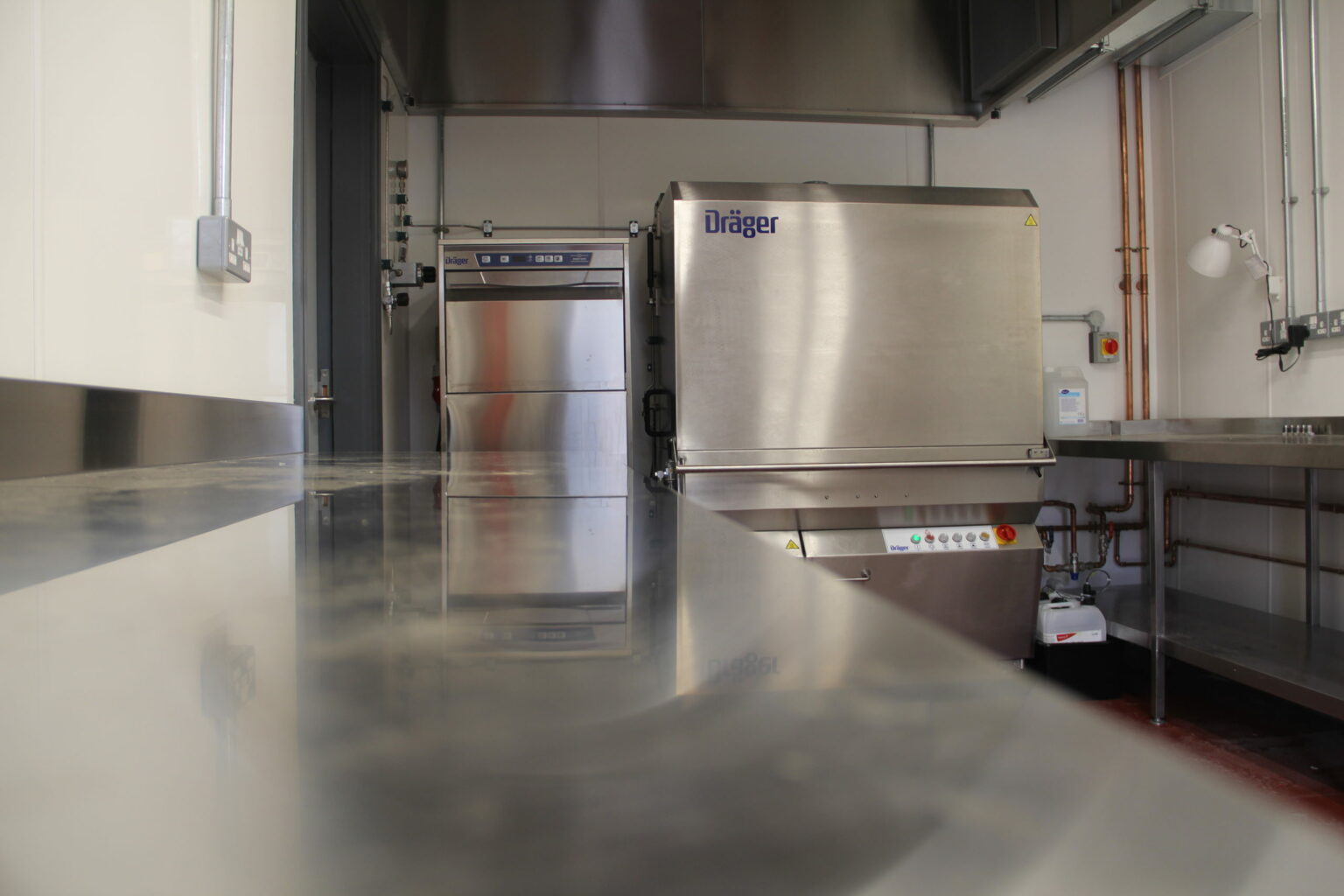Fire and Rescue Service invest in Dräger mechanical cleaning systems to protect firefighter health
- September 20, 2021
- 10:33 am


Iain Hoey
Share this content
County Durham and Darlington Fire and Rescue Service (CDDFRS) has implemented Dräger’s Cleaning Solution as part of its new state-of-the art decontamination facility, designed to ensure optimal cleaning and disinfection of firefighter equipment.
The initiative will not only help protect firefighters from harmful carcinogens and germs, but the innovative nature of the new decontamination and cleaning regime will also help improve the useful working life of the equipment the firefighters use.
Dräger’s Cleaning Solution package includes Harstra’s Wash 9DR and Wash 6DR mechanical cleaning machines plus additional self-contained breathing apparatus (SCBA) and associated equipment to enhance operational logistics.
The compact Wash 9DR stainless steel cleaning machine is an automatic solution for cleaning breathing masks that has low water and energy consumption. The Wash 6DR is a solution for cleaning higher volumes of complete breathing apparatus, including full face masks, compressed air breathing apparatus, helmets, and back plates (without the cylinder). In-built dosing pumps ensure consistency of cleaning, and the high-pressure 4-sided bayonet nozzles maintain water pressure during the cleaning process, preventing moisture from getting into equipment. Two compartments prevent cross-contamination and during washing the doors are electrically locked.
Modular in design and simple to use, the mechanical cleaning machines can be configured to suit specific workshop areas and capacity requirements, with washing and rinsing cycle options available in as low as 5, 10 and 22 minutes and featuring in-built water softening.
CDDFRS’s new decontamination facility is part of a remodelling of the fire service’s existing training facility, and now provides additional showering and changing areas for firefighters as well as distinct areas for washing, drying, and servicing equipment. New protocols have been introduced to minimise cross contamination of equipment and firefighters’ exposure to combustion products from leaving an incident to shift end.
The decision to commission the facility is a part CDDFRS’s commitment to its core values of pioneering innovation, prioritising firefighter wellbeing and safety, and driving improvements in managing contaminants. CDDFRS is part of a working group that brings together firefighters, fire chiefs, estates, governance, the FBU and public organisations to agree best practice.
Dan Wootton, Fire Officer for CDDFRS, says while mechanical washing of equipment is new to the UK fire services, in recent years the benefits have come to the fore: “Dutch fire services have invested in mechanical washing over recent years, leading to clear benefits in terms of disinfection and cleaning consistency, and an awareness of this is what drove us to move away from manual cleaning.”
CDDFRS opted for Dräger because it was able to provide the right approved equipment for the service’s needs (including capacity and wash cycle lengths) and critically was able to provide on-the-ground logistical support in installation and ongoing servicing and maintenance. Logistical support encompasses ensuring there is enough equipment ready for use at any one time, and – with firefighters being required to spend less time manually cleaning – advising on operational processes that maximise working capacity.
Liz Millward, Marketing Manager Emergency and Rescue Services at Draeger Safety UK, says in recent years there has seen a welcomed cultural shift with greater awareness of firefighter long-term health:
“We now know that carcinogens on dirty kit have a long-term impact on firefighters’ health, which has been compounded by the pandemic. As part of our Health for the Firefighter campaign we surveyed firefighters and found there to be considerable concern around their long-term health with regard to both carcinogens and Covid-19,” she explains.
“It is fantastic and testament to CDDFRS’s culture that it is trailblazing proven advancements to cleaning and disinfection – for the sole purpose of furthering firefighter health and wellbeing.”
CDDFRS implemented a staged introduction, by initially only utilising the new facility following training exercises. This gave crews the opportunity to feedback and hone the process with heavily exposed equipment to ensure a streamlined introduction to wider use.
“Other fire services are keen to see how it works and how well firefighters have adapted,” adds Dan. “We have various video and online communication tools that we have used to ensure firefighters have been on board with changes at every step of the way.
“Overall, through our new facility we’ve been able to improve firefighter working conditions and support their health and wellbeing – and we’re proud that this has been the driving force behind investment,” he concludes.



